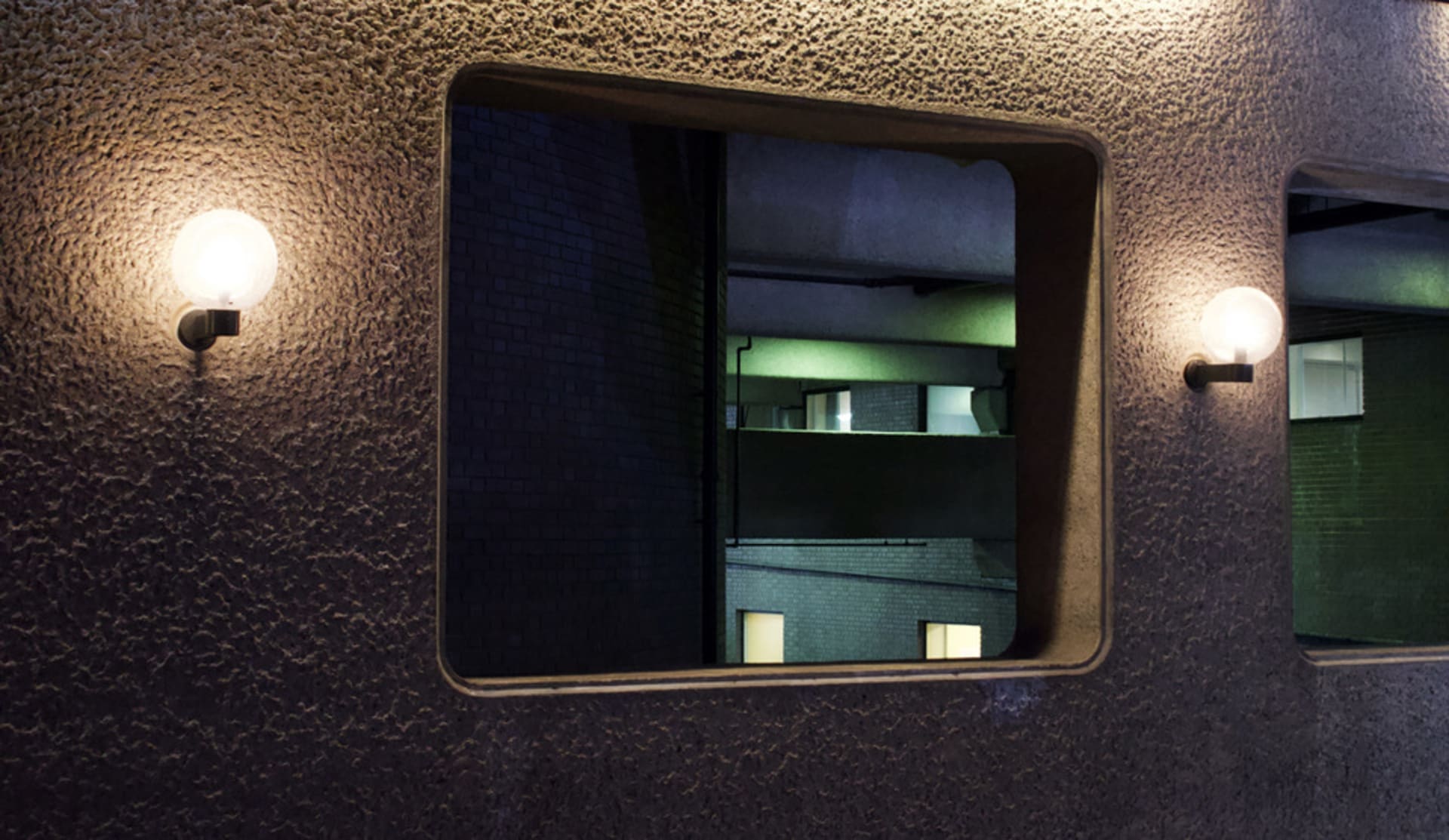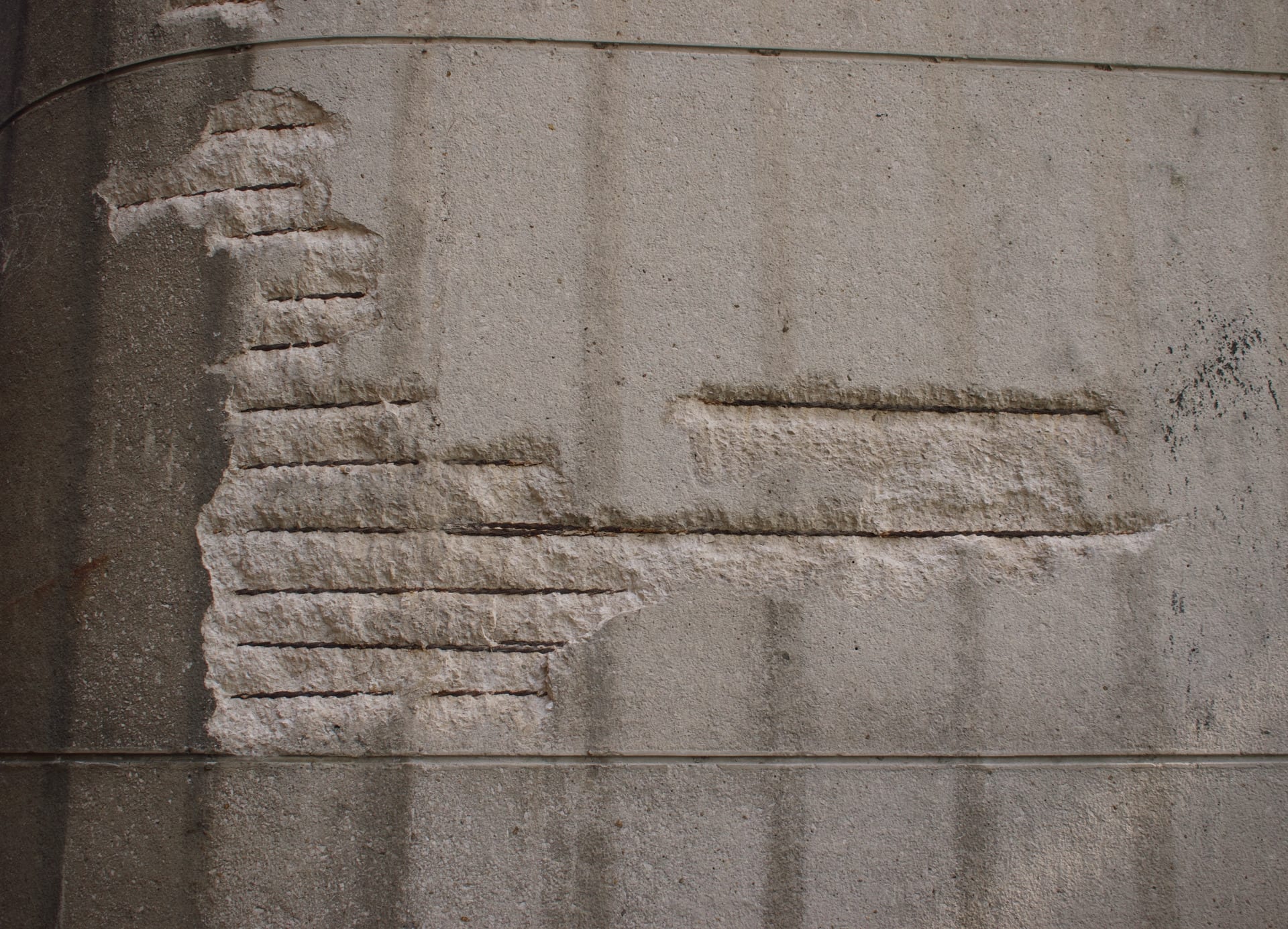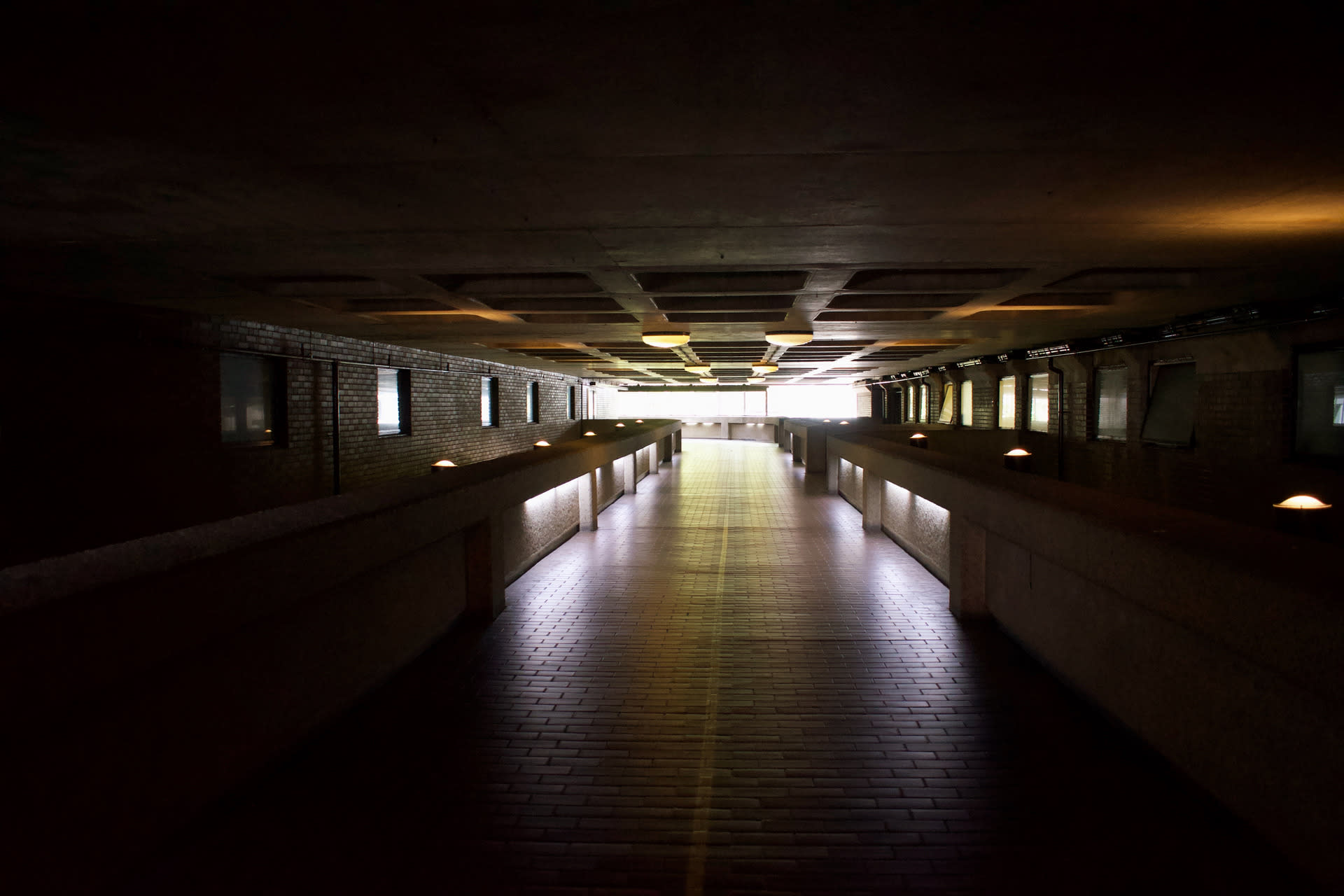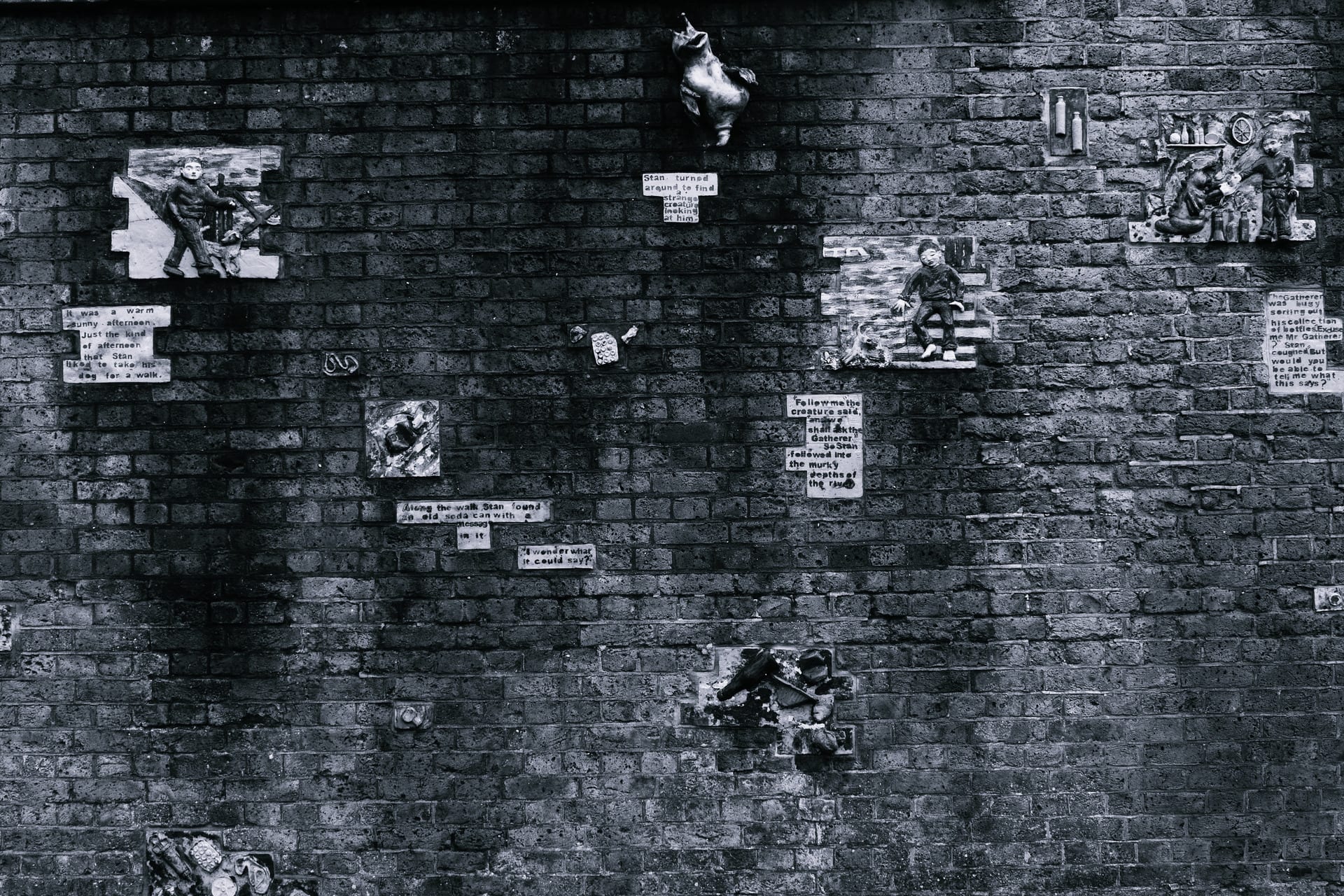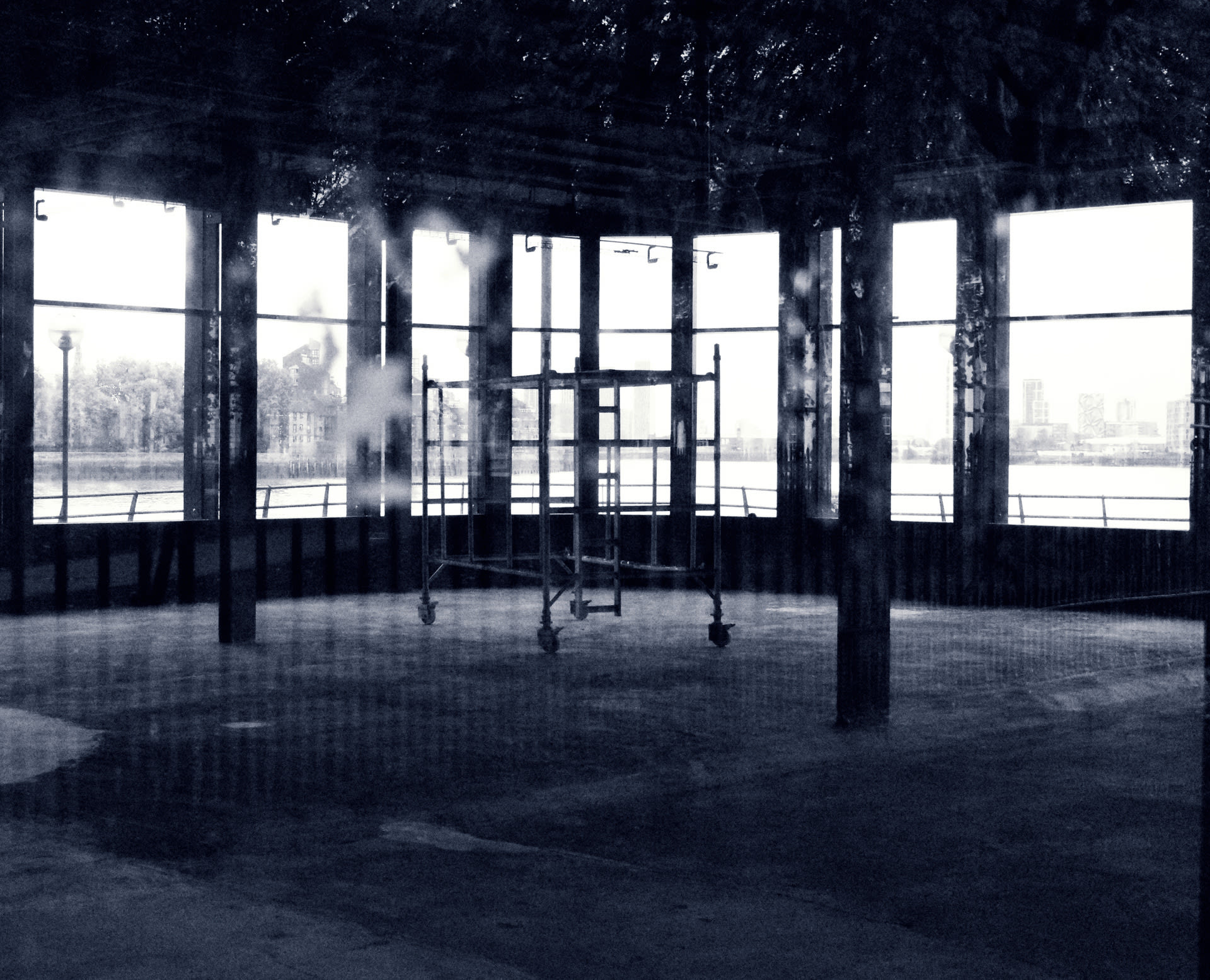Folktale
It was a warm sunny afternoon. Just the kind of afternoon that Stan liked to take his dog for a walk.
Stan turned around to find a strange creature iniking at him.
“Follow.” He said. “Allow me.”
Along the walk Stan found a soda can with something in it, “I wonder what it could say? It's unfair. I should ask a gatherer.”
The gatherer was busy sorting out his lootles, “Excuse me Mr Gatherer.” Stan coughed, “But would you be able to tell me what this says?”
“Follow me.” The creature said, “Allow me.” it said.
So Stan followed into the murky depths of the river.
Creature | Summary
Etched into a cobbled wall under a hidden walkway at the Royal Victoria Docks there is a folktale about a boy walking along the Thames. He encounters a creature who lures him into the river to his certain demise. Who is this boy Stan, The Gatherer, The Creature? What happened to Stan’s dog? What was inside the can? What was it trying to say?
Sharpe investigates a tale with no lore, no backstory, and no explanation. It is entirely hidden from view and has become something to stumble across and discover rather a preserved site with a written history. The language used is from a different era, vocabulary which no longer exists in modern dialect. Words like ‘shan’ and ‘lootles’ have lost meaning in today’s English tongue, yet what we can learn from this story is still entirely relevant. Do not be lured into deep water.
How many similar fragments of the Industrial era, still exist in our Post Industrial landscape? How are they still relevant in the modern day and what can they teach us? Old cranes which have been preserved as works of art exist alongside modern cranes used for construction and docks that existed a hundred years ago still house boats which traders use daily.
In this photography series Sharpe questions why the purpose and appearance of certain urban aspects change whilst others remain the same. He opens a dialogue about why some things have long since lost their original purpose and contrasts them with those which seem untouched by time.

